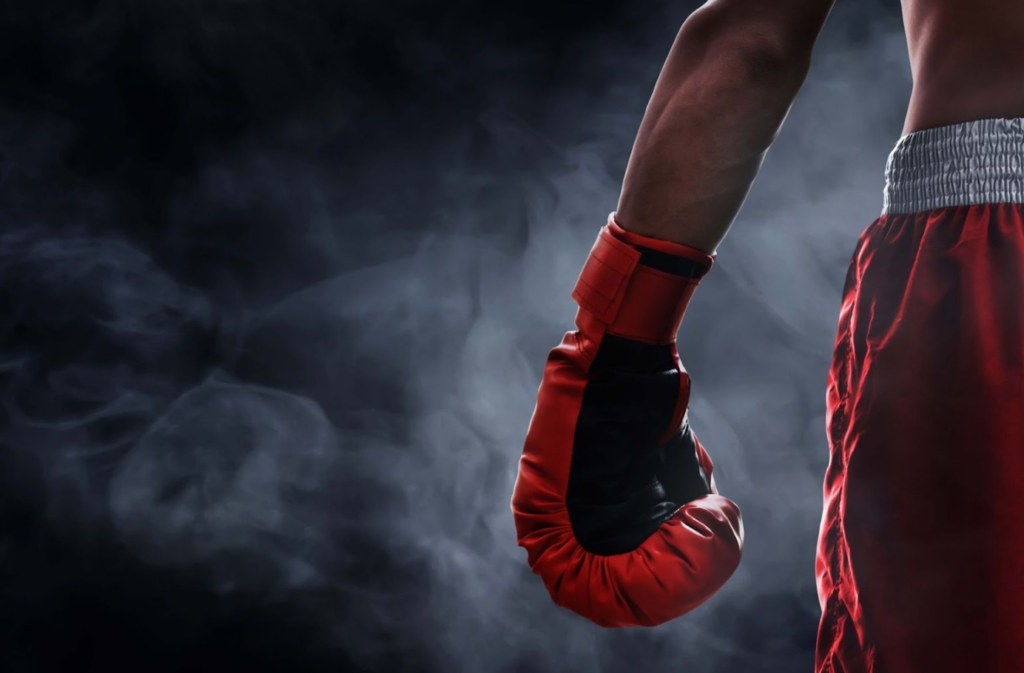Boxing is not only an art, but also a sport that requires a high degree of protection and comfort. One of the key elements of equipment is boxing gloves. Choosing the right gloves can make a big difference to your performance, safety and comfort during training and competition. How to choose boxing gloves is a question on everyone’s mind when starting out in the sport. Boxing gloves play an important role in protecting your hands and arms, as well as cushioning blows, which helps prevent injury to both you and your partner or opponent.
Types of boxing gloves
There are several basic types of boxing gloves, each designed for a specific purpose:
- Training gloves – used for daily training, sparring and bag work. They provide good protection and comfort during long training sessions.
- Competition gloves – designed specifically for official fights. These gloves often have a thinner layer of padding to increase punching speed and accuracy.
- Bag gloves – designed to work with various types of training equipment such as heavy bags and air bags. They have reinforced padding to minimise the risk of injury during intensive work.
- Fitness Gloves – used for fitness boxing and cardio workouts. These gloves are usually lighter and smaller than traditional boxing gloves.
Boxing glove materials
The material used to make boxing gloves plays an important role in their durability and comfort. The most common materials are leather and synthetic materials.
- Leather gloves are the most durable and comfortable option. Leather has excellent ventilation and adapts to the shape of the hand. However, leather gloves are more expensive and require special care.
- Synthetic gloves are a more affordable option. They are easier to maintain and often more resistant to moisture. However, synthetic materials can be less durable and not as comfortable as leather.
How to choose a boxing glove size
Choosing the right boxing glove size is one of the key aspects to ensure comfort and safety during training and fights. How to choose a boxing glove size is usually specified in ounces (oz) and depends on the weight of the athlete and the type of training.
8-10 oz.
8-10 oz gloves are used for competition and sparring by professional boxers, especially in the lightweight categories. These gloves provide:
- Fast and accurate punches: The light weight of the gloves allows the boxer to deliver fast and accurate punches, which is especially important in competition.
- Minimal cushioning: Less padding makes the gloves less bulky, but it also reduces the level of protection, making them less suitable for intense training.
- Suitable for light weight categories: These gloves are often chosen by boxers whose weight does not exceed 70kg. They provide the necessary protection while minimising weight gain.
12 oz.
The 12 oz gloves are a versatile size for sparring and bag training. They provide:
- Balance between speed and protection: This size offers a good combination of protection and speed, making them ideal for different types of workouts.
- Suitable for medium weight: Typically chosen by boxers weighing between 70 and 80kg. The 12 oz gloves provide sufficient shock absorption and protect your hands from injury.
- Versatility: They can be used for both bag work and sparring, making them a popular choice among amateurs and professionals.
14-16 oz.
The 14-16 oz gloves are more commonly used for training and sparring by heavyweight boxers or those who prefer extra protection. These gloves offer:
- Maximum protection: More padding provides better cushioning, reducing the risk of injury for both the boxer and his sparring partner.
- Suitable for heavyweight boxers: Recommended for athletes whose weight exceeds 80kg. Gloves of this size help to better distribute the force of impact, which is especially important during intensive training.
- Ideal for beginners: Beginning boxers often choose 14-16 oz gloves as they provide better support and protection, helping to avoid injury while learning.
- Intense training: These gloves are great for long and intense workouts as they reduce stress on your hands and wrists.
How to choose boxing gloves
When choosing boxing gloves, it is important to consider not only their weight, but also their fit on the hand. How to choose the size of boxing gloves is a question that concerns many people, as the right size provides comfort, safety and efficiency of training. The gloves should fit snugly but not constrict movement, providing a secure fit and protection.
Palm circumference
One of the main parameters that helps you choose the right glove size is the palm circumference. To determine this parameter, follow the steps below:
- Measure the circumference of your palm: Use a soft measuring tape and wrap it around your palm, not including your thumb. Make sure that the tape fits snugly against the skin but does not compress it.
- Determine the size: Compare the value obtained with the size chart provided by the glove manufacturer. Sizes are usually distributed as follows:
- XS (Extra Small): up to 17.5 cm
- S (Small): 17.5-19 cm.
- M (Medium): 19-21.5 cm
- L (Large): 21.5-24 cm
- XL (Extra Large): over 24 cm
Packing density
Padding density is an important factor when choosing gloves, as it determines the level of protection and cushioning. Different types of training require different padding densities:
- For bagging: Choose gloves with dense padding to protect your hands from impact on a heavy bag. This padding provides maximum cushioning and reduces the risk of injury.
- For sparring: Gloves with moderate padding density provide good protection for both you and your partner. They should be soft to reduce the risk of injury on contact.
- For fitness training: If you do fitness boxing, choose gloves with light padding that provide adequate protection and comfort for quick and repetitive punches.
Adjustable clasp
The clasp plays an important role in securing the gloves to your hand. There are two main types of clasps:
- Velcro: Gloves with Velcro are easy to use, as they can be quickly put on and taken off. They are ideal for training sessions where frequent glove changes are required. Velcro allows you to precisely adjust the fit of the gloves on your hand.
- Lacing: Laced gloves provide a tighter and more secure fit, which is especially important for professional fights and intensive training. However, these gloves take longer to put on and take off, so they are less convenient for everyday training.
Choosing boxing gloves is an important process that requires attention to detail and an understanding of your needs and goals. Considering the type of training you do, the glove material, size and type of buckle will help you find the perfect pair that will provide maximum comfort and protection. Whether you are a novice boxer or a seasoned professional, choosing the right gloves will help you avoid injuries and achieve the best results in your training and fights. Carefully consider all aspects of glove selection to ensure that every training session is fun and safe for you.
Harness the power of cashback with reBITme! Choose your boxing gloves, activate your cashback and enjoy the added benefits of every purchase. Let savings become your new superhero!





